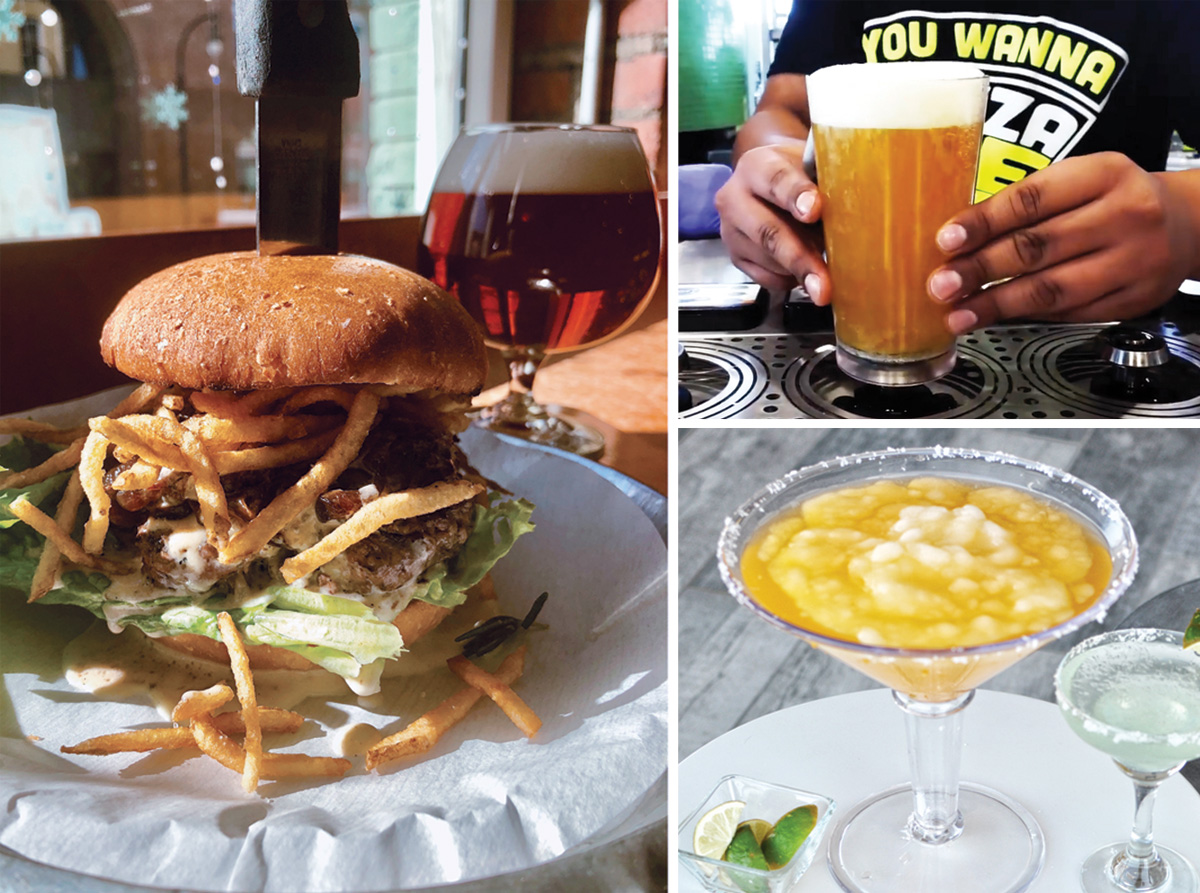The rise of craft cocktails, wine, and beer may be more associated with full-service restaurants and bars, but such libations could offer a lucrative opportunity on the limited-service side, too. According to WineAmerica, a national association of wineries, the U.S. led the world in wine consumption with sales close to $35 billion in 2014. At the same time, the Brewers Association noted that craft beer sales increased 5 percent in 2017.
“They’re an important part of the eating-out experience now,” says Seth Gross, owner of Bull City Burger and Brewery in Durham, North Carolina. In addition to chef-created meals, customers can order craft beer or wine as complements to their meal, he adds.
Offering alcohol also creates separation from the competition. Or as Gross puts it, the caliber of the libations should be on par with the food. “Don’t be shy about using esoteric items if they fit your food, theme, or quality level, because they’re differentiators and customers return for things they can’t get elsewhere,” he says.
Although upgraded beverage programs have become an almost expected facet of today’s restaurant experience, it can be difficult for limited-service restaurants to determine the upfront cost and whether it will be a worthwhile investment. Plus, fast casuals and quick serves must still live up to their name, meaning even fancy beverages need a quick turnaround.
“Fast casual caters towards millennials and professionals, and they’re looking for speed and entertainment,” says Sammy Aldeeb, CEO and founder of Urban Bricks Pizza, headquartered in San Antonio, Texas. Aldeeb upgraded to the Bottoms Up beer machine, which can cost between $1,500 and $9,000 depending on the model.
To maintain a quick throughput, some restaurants use machines that cut down on costly waste and enhance the experience. The Bottoms Up beer machine, Enomatic wine dispenser, and touch-and-pour systems make the visit fun for customers and easier on staff. Plus, operators quickly recoup their investment.
Gross says the $16,000 Enomatic and $2,000 touch-and-pour system at Bull City Burger have paid for themselves many times over.
“We got the Enomatic and hoped it would one day pay for itself, and it paid for itself in under two years,” he says. “I was shocked at how customers adopted and enjoyed it.”
Although such an investment may pay dividends farther down the line, it can be a hefty amount upfront. Maintaining a low alcohol inventory can reduce the initial costs associated with launching a beverage program. For example, owner and chef Wendy Wu carries no more than $1,000 worth of alcohol at her fast casual Wild Chix & Waffles in Austin, Texas.
Jeff Kraus, chef and owner of Crêpe Bar in Tempe, Arizona, upgraded his beverage program, but managed to keep costs low.
“The start-up amounts were relatively minimal, and were mostly fees and insurance,” he says. “We have a full liquor license that falls under our restaurant license, so it was $3,500 to start up, and our on-hand inventory is light, probably $300–$400 per week.”
Liquor licenses, which dramatically vary in cost, may make green-lighting a beverage upgrade a simple numbers game. Urban Bricks has 30 locations across the country, and Aldeeb says he’s paid between $8,000 and $200,000 for liquor licenses. (He voted against paying $900,000 in Montana, where he has yet to open a store.) Wu in Texas and Kraus in Arizona both say licenses were much cheaper in their respective states.
Beyond equipment and licenses, Urban Bricks and Crêpe Bar went the extra mile by adding in full bars. Aldeeb says bar installations at certain locations ran $40,000, while Kraus estimates $6,500. Like liquor licenses, the cost of build and equipment can vary by state.
“If you’re not used to a bar, there’s a learning curve and it can be a challenge,” says Mike Rypka, founder and chairman of Torchy’s Tacos in Austin, Texas. “For a full bar, there’s a certain amount of liquors needed and added equipment, but it’s not just, ‘Hey, let’s build a bar and get after it.’”
With new alcohol policies in place and possibly a newly constructed bar, owners say staff training is another cost that requires attention. At Crêpe Bar, Kraus had a customer order alcohol to go; luckily a staff member caught the order in time to say no.
“What’s scary is it’s a fast-paced environment where customers go in and out,” Kraus says. “With ID checking, possible overconsumption, or customers going outside with drinks, it might mean adding two or three more staff.”
But despite varying costs, owners say if customers want the upgrade and it fits the concept, the ROI is a slam-dunk.
Bull City Burger’s Gross points out that many restaurants mark spirits up three to five times, beer three times, and wine two to three times. “It’s easy to see that as a significant profit center because the margins are way better than food, where we struggle for 10–15 percent, and wine can be 100–300 percent.” Thanks to its varied selection, Bull City Burger makes 20–25 percent of its daily sales in alcohol.
At Wild Chix & Waffles, Wu says 30–40 percent of drink sales come from alcohol, while Rypka says it’s 10–14 percent of Torchy’s bottom line.
For Kraus, the upgrade yielded significant financial returns. “If you’re not setting yourself apart with beverages that complement your menu, you’re missing out,” he says. “It’s a quick return, doesn’t cost very much, it’s sustainable, and many new quick serves already [are prepared].”
In addition to bolstering sales, such beverage programs create a hybrid model that allows operators to dip into quick-service and full-service buckets.
“We serve quality food at lower prices as a limited-service restaurant, but we also offer the fun things customers look for in full service, so these alcoholic beverages help us bridge that gap,” Wu says.










